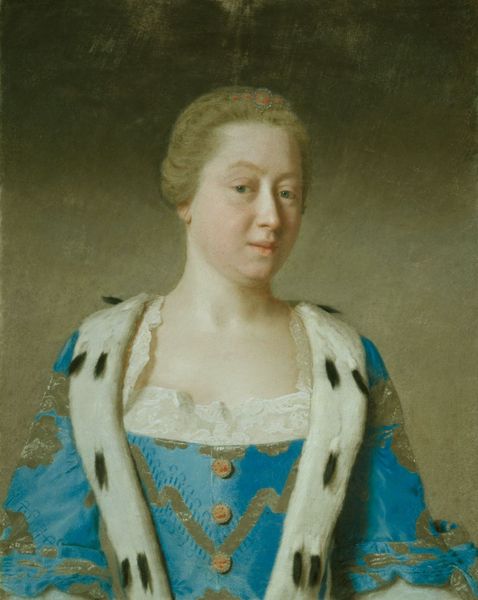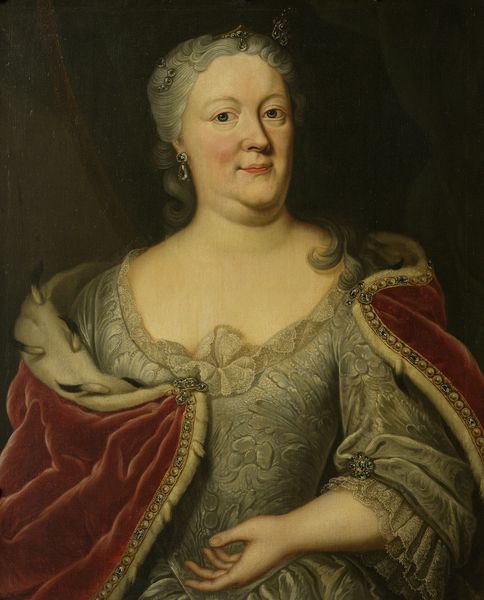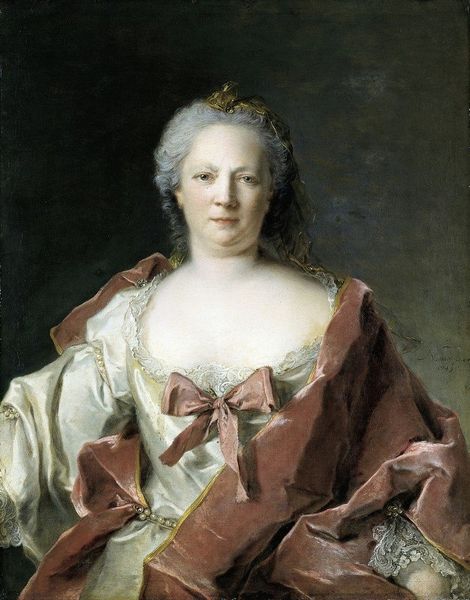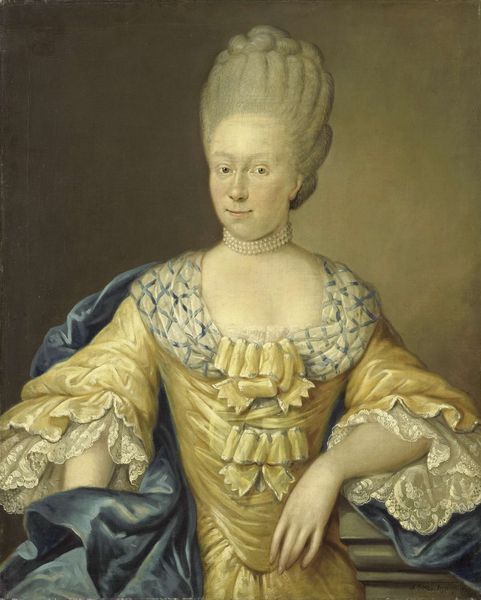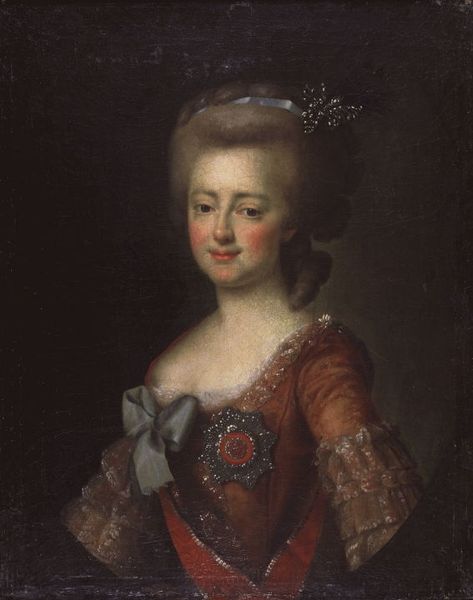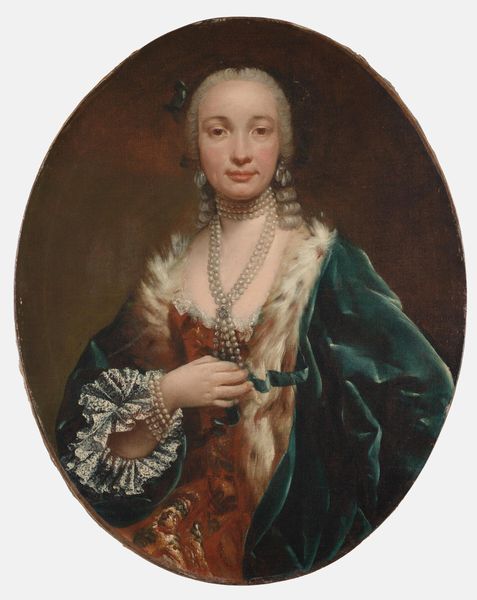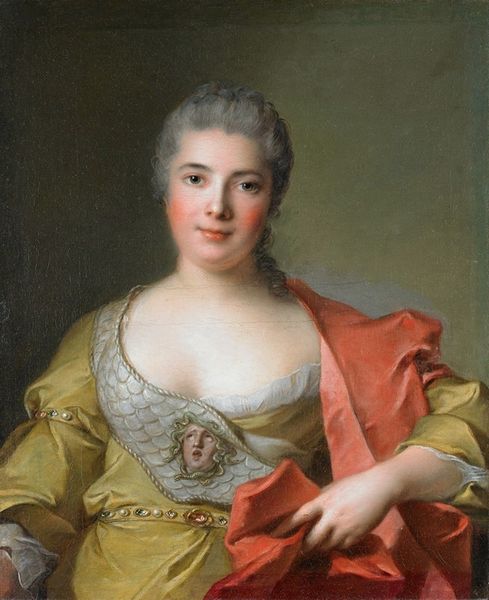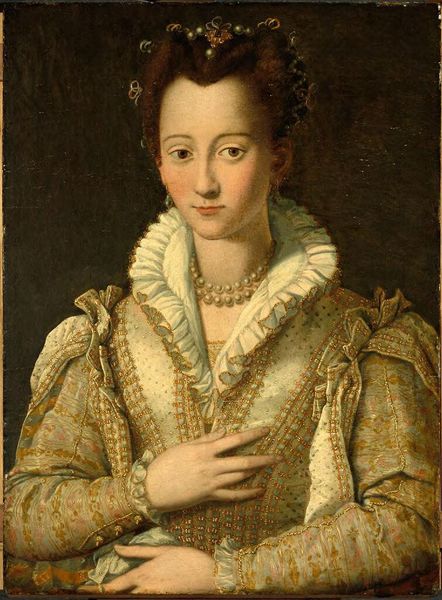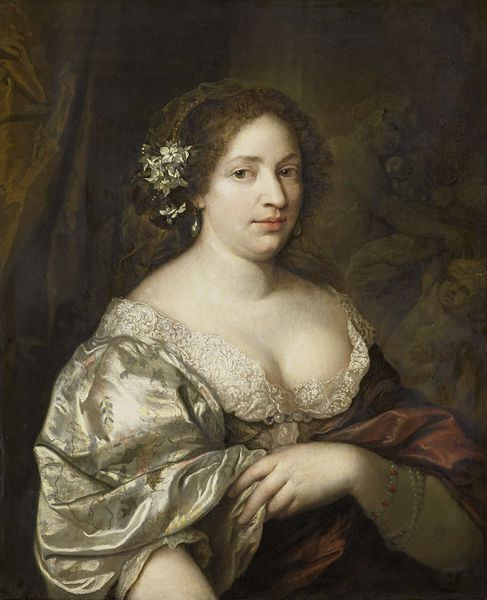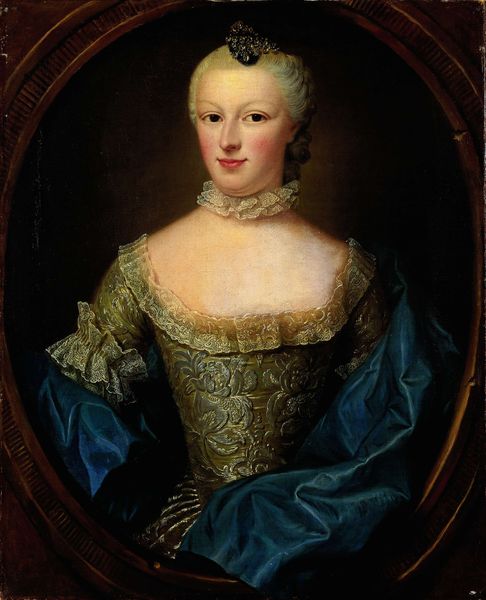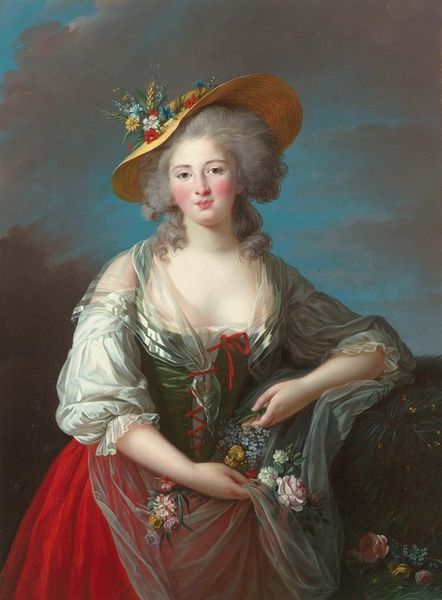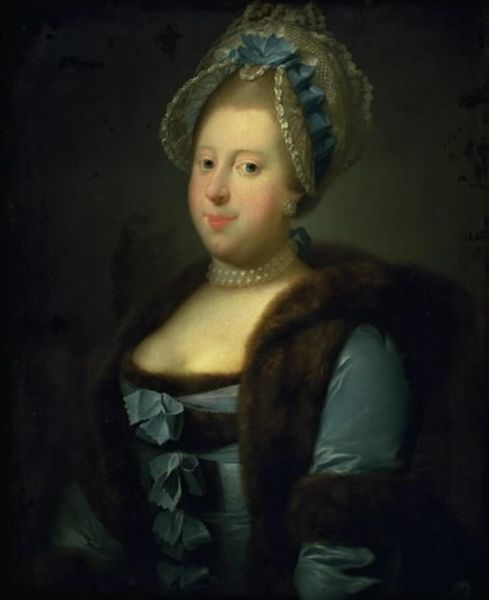
Maria Theresa, Archduchess of Austria, Queen of Hungary and Bohemia, and Holy Roman Empress 1747
0:00
0:00
jeanetienneliotard
Rijksmuseum
#
portrait image
#
portrait reference
#
portrait head and shoulder
#
animal drawing portrait
#
portrait drawing
#
facial portrait
#
portrait art
#
fine art portrait
#
celebrity portrait
#
digital portrait
Dimensions: height 62 cm, width 51 cm
Copyright: Rijks Museum: Open Domain
Editor: So, here we have Jean-Étienne Liotard's "Maria Theresa, Archduchess of Austria, Queen of Hungary and Bohemia, and Holy Roman Empress," from 1747. It’s currently housed at the Rijksmuseum. Looking at her portrait, I'm struck by a sense of restrained power. How do you interpret the symbolic language within this portrait? Curator: The imagery speaks volumes. The ermine, the crown, even the cut of her gown, function as overt symbols of power. However, what fascinates me is how Liotard subtly layers other symbols. Do you notice the almost ethereal quality to her skin? It speaks not just of her noble status, but hints at the carefully constructed persona expected of her. Consider what her gaze conveys, that mix of directness and detachment – what narrative is constructed there? Editor: I see what you mean about her skin tone now; it’s like a mask. And yes, the gaze... it's a presentation, not necessarily a reflection of an inner self. Do you think Liotard was making a specific comment about the role of women in power during that time? Curator: Absolutely. Think of portraits in that era as carefully orchestrated performances. The artist captured Maria Theresa but also the ideal of female leadership. The brooch, the texture of the fur...Liotard paid incredible attention to detail that alludes to moral authority, prosperity, and dynastic strength. Each object carries weight, designed to elicit a certain emotional response. Consider too, the absence of overt emotion in her face. What does that silence suggest? Editor: I hadn't considered it like a constructed "performance" before, but now it seems obvious. It makes you wonder about the real person behind all the symbolic trappings. Curator: Precisely! The power of imagery is that it transcends a simple likeness; it speaks to a collective memory, reinforcing and sometimes subverting societal ideals. What has changed...and what has stayed the same? Editor: I'll never look at a portrait the same way again. Thanks! Curator: And I'm grateful for the opportunity to explore how these symbols persist, shaping how we perceive power today.
Comments
rijksmuseum about 2 years ago
⋮
Liotard made this enamel during a visit to Lyon, basing it on one of several portraits of the sovereign he had earlier done in Vienna. He was particularly proud of the ‘brilliance’ of the hard gem-like surface and colouring. It is one of the largest enamel paintings ever made, and the technique gave Liotard some difficulty: an inscription on the back records that this was the ‘second attempt.’
Join the conversation
Join millions of artists and users on Artera today and experience the ultimate creative platform.

